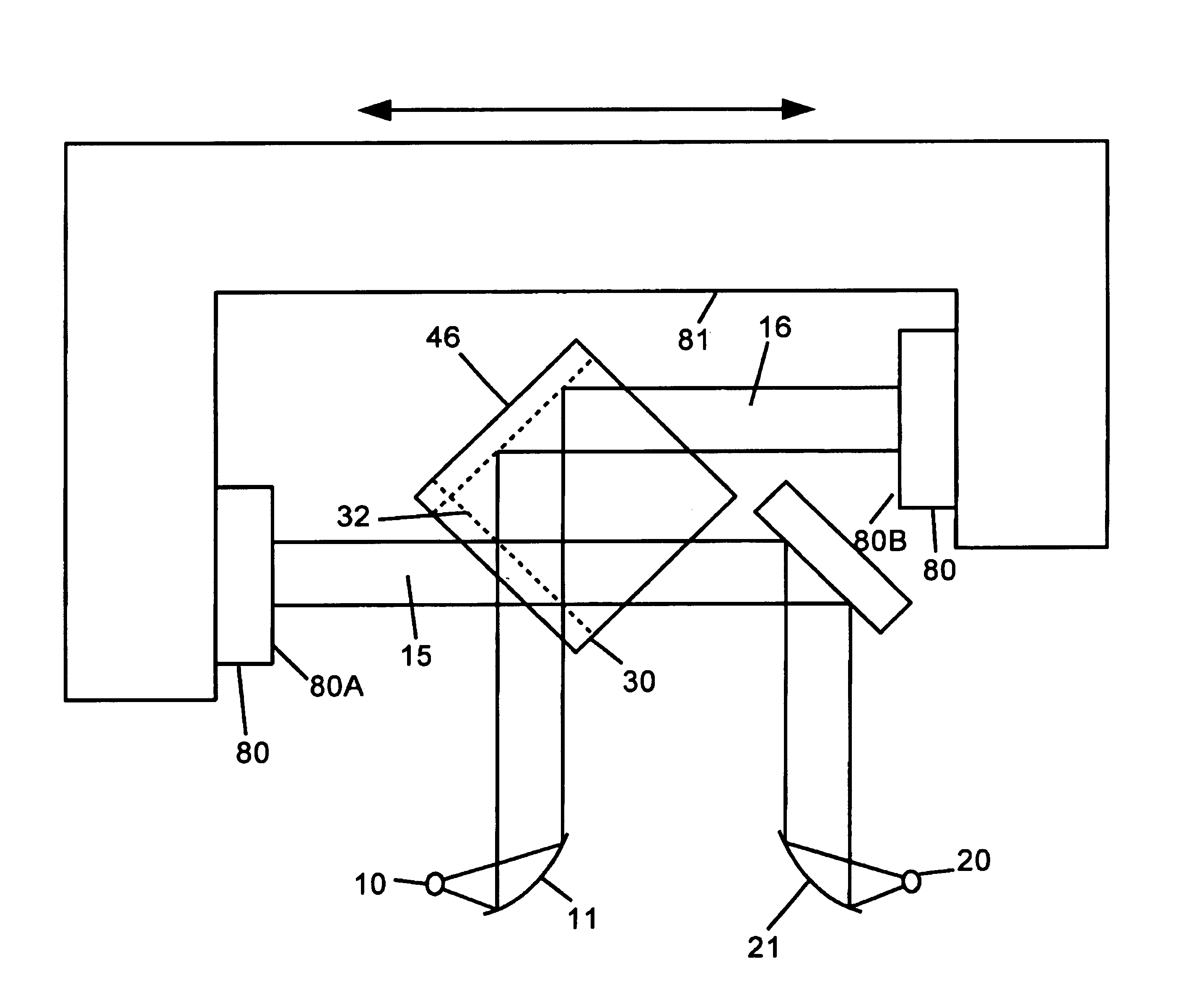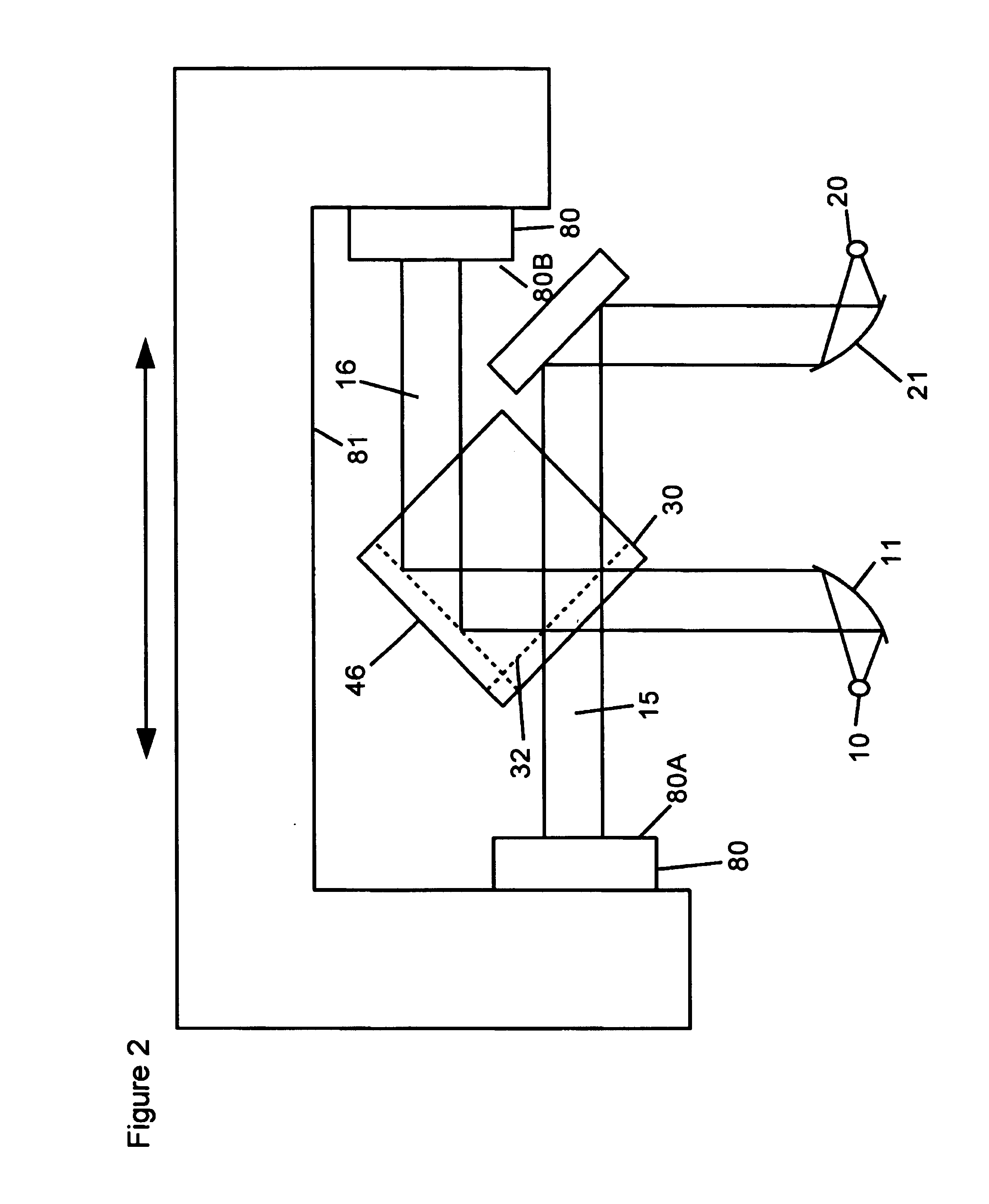Tilt-compensated interferometers
a technology of tilt compensation and interferometer, which is applied in the field of new interferometers, can solve the problems of long optical paths required for optical tilt compensation, beams of radiation not reaching exactly the intended detection location, and two end mirrors b>80/b>a and b>80/b>b are susceptible to misalignment with each other, so as to improve photometric accuracy, improve throughput, and compact design
- Summary
- Abstract
- Description
- Claims
- Application Information
AI Technical Summary
Benefits of technology
Problems solved by technology
Method used
Image
Examples
Embodiment Construction
[0027]The operation of the various interferometer embodiments of the invention described below is analogous to the operation of the prior art Michelson interferometer. The same external components such as source, laser, detector and laser detector may be used with the designs described below to achieve ends that are either known or as-yet undiscovered. Electronics and computers are preferably used to process the data according to known means. Many of the known methods of operation are detailed in Griffiths and deHaseths' book, cited above.
[0028]FIG. 2 shows a plan view of a permanently aligned interferometer for which errors of the motion of the scanning assembly 81 are compensated. The assembly 81 may be supported by a variety of mechanisms including ball bearing slides, roller bearings, flex pivots, or airbearings to provide smooth, essentially rectilinear motion. The beamsplitter is indicated by 30 and roof reflector / beamsplitter mounting monolith is indicated by 46. Two mirrors ...
PUM
 Login to View More
Login to View More Abstract
Description
Claims
Application Information
 Login to View More
Login to View More - R&D
- Intellectual Property
- Life Sciences
- Materials
- Tech Scout
- Unparalleled Data Quality
- Higher Quality Content
- 60% Fewer Hallucinations
Browse by: Latest US Patents, China's latest patents, Technical Efficacy Thesaurus, Application Domain, Technology Topic, Popular Technical Reports.
© 2025 PatSnap. All rights reserved.Legal|Privacy policy|Modern Slavery Act Transparency Statement|Sitemap|About US| Contact US: help@patsnap.com



